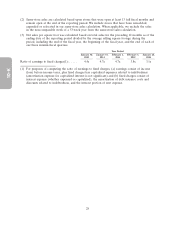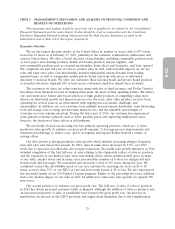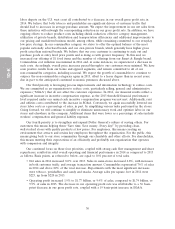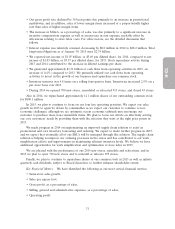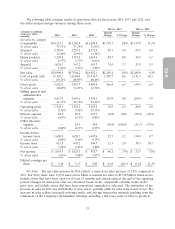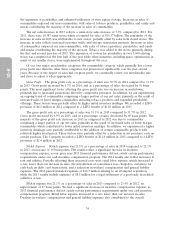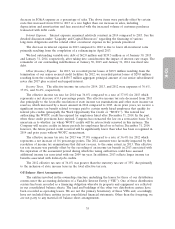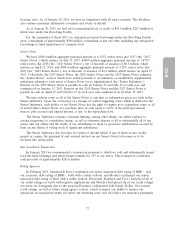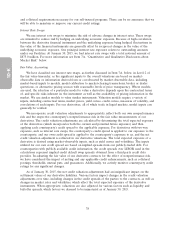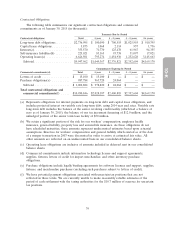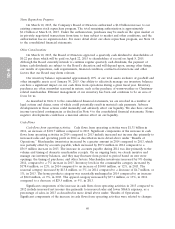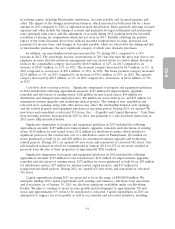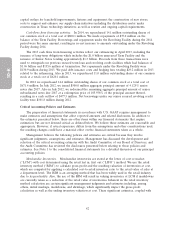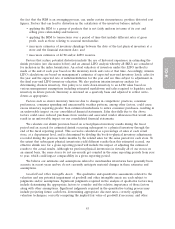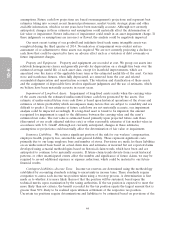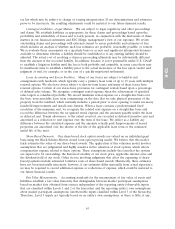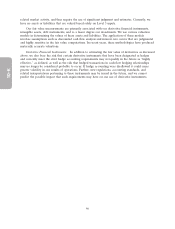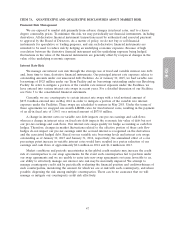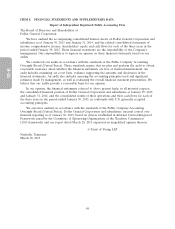Dollar General 2014 Annual Report Download - page 112
Download and view the complete annual report
Please find page 112 of the 2014 Dollar General annual report below. You can navigate through the pages in the report by either clicking on the pages listed below, or by using the keyword search tool below to find specific information within the annual report.
10-K
and collateral requirements necessary for our self-insured programs. There can be no assurance that we
will be able to maintain or improve our current credit ratings.
Interest Rate Swaps
We use interest rate swaps to minimize the risk of adverse changes in interest rates. These swaps
are intended to reduce risk by hedging an underlying economic exposure. Because of high correlation
between the derivative financial instrument and the underlying exposure being hedged, fluctuations in
the value of the financial instruments are generally offset by reciprocal changes in the value of the
underlying economic exposure. Our principal interest rate exposure relates to outstanding amounts
under our Facilities. At January 30, 2015, we had interest rate swaps with a total notional amount of
$875.0 million. For more information see Item 7A, ‘‘Quantitative and Qualitative Disclosures about
Market Risk’’ below.
Fair Value Accounting
We have classified our interest rate swaps, as further discussed in Item 7A. below, in Level 2 of
the fair value hierarchy, as the significant inputs to the overall valuations are based on market-
observable data or information derived from or corroborated by market-observable data, including
market-based inputs to models, model calibration to market-clearing transactions, broker or dealer
quotations, or alternative pricing sources with reasonable levels of price transparency. Where models
are used, the selection of a particular model to value a derivative depends upon the contractual terms
of, and specific risks inherent in, the instrument as well as the availability of pricing information in the
market. We use similar models to value similar instruments. Valuation models require a variety of
inputs, including contractual terms, market prices, yield curves, credit curves, measures of volatility, and
correlations of such inputs. For our derivatives, all of which trade in liquid markets, model inputs can
generally be verified.
We incorporate credit valuation adjustments to appropriately reflect both our own nonperformance
risk and the respective counterparty’s nonperformance risk in the fair value measurements of our
derivatives. The credit valuation adjustments are calculated by determining the total expected exposure
of the derivatives (which incorporates both the current and potential future exposure) and then
applying each counterparty’s credit spread to the applicable exposure. For derivatives with two-way
exposure, such as interest rate swaps, the counterparty’s credit spread is applied to our exposure to the
counterparty, and our own credit spread is applied to the counterparty’s exposure to us, and the net
credit valuation adjustment is reflected in our derivative valuations. The total expected exposure of a
derivative is derived using market-observable inputs, such as yield curves and volatilities. The inputs
utilized for our own credit spread are based on implied spreads from our publicly-traded debt. For
counterparties with publicly available credit information, the credit spreads over LIBOR used in the
calculations represent implied credit default swap spreads obtained from a third party credit data
provider. In adjusting the fair value of our derivative contracts for the effect of nonperformance risk,
we have considered the impact of netting and any applicable credit enhancements, such as collateral
postings, thresholds, mutual puts, and guarantees. Additionally, we actively monitor counterparty credit
ratings for any significant changes.
As of January 30, 2015, the net credit valuation adjustments had an insignificant impact on the
settlement values of our derivative liabilities. Various factors impact changes in the credit valuation
adjustments over time, including changes in the credit spreads of the parties to the contracts, as well as
changes in market rates and volatilities, which affect the total expected exposure of the derivative
instruments. When appropriate, valuations are also adjusted for various factors such as liquidity and
bid/offer spreads, which factors we deemed to be immaterial as of January 30, 2015.
38


